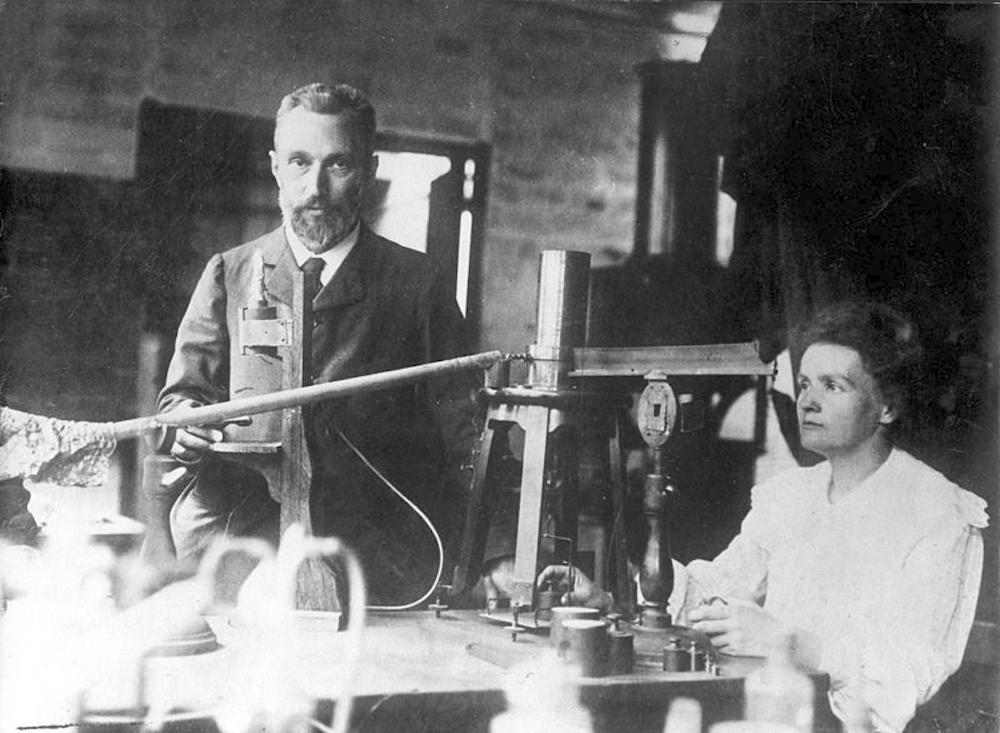In a Field by Herself
On November 7, 1867, physicist and chemist Marie Skłodowska–Curie was born in Poland. A studious young daughter of a scientist, she grew up to become one of the giants of all modern science. With her husband, Pierre Curie, she studied chemical elements in their pure form. This often meant a great deal of hard physical labour as rocks required breaking apart followed by further preparation with molten materials as they searched for and examined radioactive elements.
They discovered the rare and highly radioactive element polonium, named for her homeland, Poland, that was under foreign control at the time. The polonium they discovered released more radioactive energy when it was removed from pitchblende, a major ore of uranium. Unknown at the time was just how extremely dangerous, difficult to handle, and unsafe polonium was. With her husband and physicist Henri Becquerel, Curie became the first woman selected for a Nobel Prize, for their joint researches on radiation phenomena.

Suddenly widowed and the mother of two young girls, Curie was given her husband’s appointment to a professorship. She kept up her difficult and dangerous work, managing to isolate radium in a pure form. Curie received her second Nobel Prize, this time in chemistry and a solo award for the isolation of pure radium and for the advancement of Chemistry.
Curie continued her study of the properties and chemistry of radioactive elements. With her daughter Irene [a future Nobel laureate in Chemistry], she began work on X-radiography and the medical applications of radioactive substances. Unfortunately, years of exposure to radioactive materials took their toll and Curie died of a related blood disorder.
How much exposure had she absorbed?
Her papers and notes are so radioactive, they are kept in lead-lined boxes and available for viewing and study only to those wearing protective clothing!
During her lifetime Mme Curie was showered with honours from governments and scientific societies around the world. Her name and likeness have appeared and continue to appear on prizes, schools, coins, postage stamps, and various institutions worldwide. She has been the subject of biographies, film, and documentaries.
To this date Marie Curie is the only person to have won a Nobel Prize in two different disciplines.
B Bondar / Real World Content Advantage